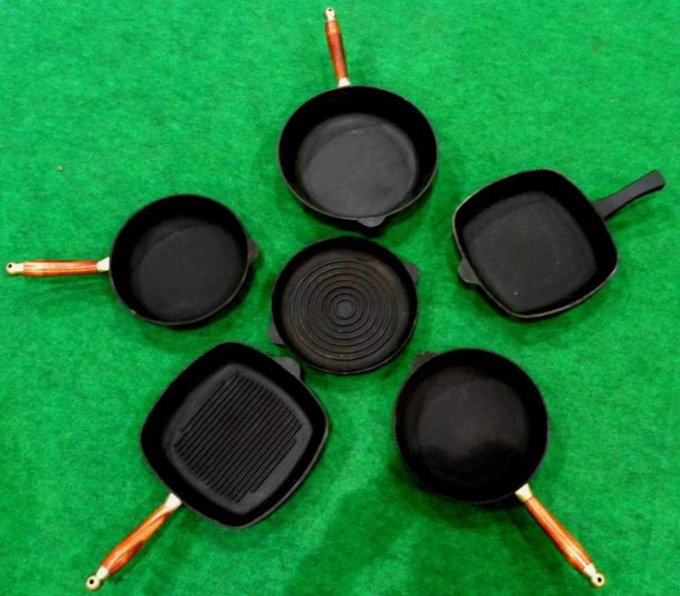Instruction
1
When buying cast iron pans remember: the heavier the better. Focusing on weight, you will avoid purchasing products made from other alloys, issued by dishonest sellers over cast iron. In accordance with GOST R 52116-2003, the "correct" thickness of the bottom and sides of utensils for frying and stewing should be 3-4 mm. Check for absence of burrs, castings, sharp edges, cracks, metal penetration. The bottom should not be curved or convex.
2
Think about the form of cast-iron frying pan. It is round, square, oval. Oval good for cooking fish, a square is considered to be more roomy, but the round somehow familiar.
3
Decide what is the size of a frying pan. Round, about 20 cm in diameter, with walls having a height of 4-5 cm, is universal. Casseroles are good for stewing. To prepare the pancakes will fit a pan with low sides diameter - depending on the size of cakes you want to. The range of products that expensive brands and meet a special pan for pancakes, donuts, fried. They can be easily recognized by a specific frying surface, on which there are recesses or partitions.
4
Choose a pan with a lid: it need and for stewing and frying to protect from oil splashes. Cover can be glass, cast iron or other materials (steel, aluminum). The first option allows better control of the cooking process, the second will make the dish especially tasty when fighting. Interestingly, although the GOST R 52116-2003 does not provide a complete set of cast-iron cookware cast iron covers, buy this "sweet couple" is still possible, especially in the markets. Steel and aluminum caps do not have the advantages of neither glass nor iron covers are therefore the worst option.
5
If you are afraid that cast iron skillet without the coating can rust, but that happens sometimes, stop your choice on the enameled product. Here, however, also has its drawback: as you know, the enamel is prone to chipping and particles can get into food. Actually a cast-iron skillet without the coating is much more durable, and sufficient rust preventive is proper care. After each washing utensils should be wiped dry and lubricated small amount of vegetable oil.
6
Purchase the product with wooden handle or with handle made of heat-resistant plastic. Although plastic is not so environmentally friendly as wood, but they won't burn if you accidentally find yourself working over a gas burner. When it is planned that the pan will be a frequent visitor in the oven, select a product from a single iron or a detachable handle. Durable, the first option is bad because a cast-iron handle gets very hot and cools down for a long time, it can cause burns. At the same time the mounting of the removable handle, unfortunately, do not always serve as long as the pan itself. If we bow to such option, to choose better in the open bolt connection: it is considered the most "unkillable". Meanwhile, the obvious and "minus" have to spend time screwing-unscrewing.
7
Pay attention to the symbols on labels and tags. According to GOST R 52116-2003 they should include the name of the product, indicating the diameter, height, or capacity, the presence of handles and lids. Information on certification (conformity mark) can be applied to the product itself, and be present on the packaging, the label, the accompanying documentation.
